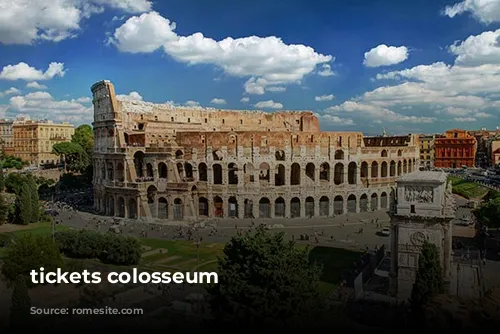The Colosseum, a majestic testament to Roman grandeur, stands as a symbol of a bygone era. This iconic amphitheatre, built in the year 72 CE by the Flavian emperor Vespasian, has captivated visitors for centuries. It was a hub of thrilling entertainment, hosting gladiator battles, animal hunts, and spectacles that drew immense crowds. The Colosseum, also known as the Amphitheatrum Flavium, was financed with spoils from Jerusalem and inaugurated by Emperor Titus with a 100-day extravaganza. Emperor Domitian, Titus’ successor, further expanded the arena, making it the largest amphitheatre in Roman history, and rightfully earning it a place among the Seven Wonders of the World.
A Glimpse into Roman Entertainment
The Colosseum served as a stage for Roman entertainment, a spectacle designed to captivate and enthrall the masses. Gladiator battles, often featuring ferocious wild animals like elephants and tigers, filled the air with roars and cheers. The morning hours were dedicated to “bestiarii”, skilled hunters who faced down dangerous beasts. Intermissions saw convicted criminals thrown into the arena as a form of public punishment, adding an element of brutality to the spectacle. The afternoon was reserved for the much-anticipated gladiator battles, where skilled warriors fought for glory and survival.
The rise of Christianity ultimately led to the decline of these barbaric games, which were finally banned in 404 CE by Emperor Honorius. The final straw was the public execution of a monk who attempted to stop a gladiatorial contest. From 404 CE to 523 CE, only animal shows were permitted, marking the gradual end of an era.
Time’s Toll on a Monument
The Colosseum, a victim of time’s relentless march, suffered considerable damage from earthquakes in the medieval period. Further erosion occurred as its stones were plundered and repurposed for building other structures like churches and palaces. Fortunately, Pope Benedict XIV, recognizing its historical significance and the blood of countless Christian martyrs spilled within its walls, declared it sacred ground in 1749, halting the plunder.
A Monument of Architectural Prowess
The Colosseum is a remarkable architectural feat, boasting a circumference of 527 meters and reaching a height of 48.50 meters. The first row of arches was constructed with limestone, while lighter bricks were used for the second and third rows. The outer walls were adorned with travertine, quarried from the hills near Tivoli, while marble graced the seats and inner walls. The arena itself, measuring 76 by 44 meters, was surrounded by a four-meter wall. An estimated 300,000 to 500,000 lives were tragically lost within its confines, a somber testament to the brutality of the games.
A Window into Roman Society
The Colosseum’s seating arrangement reflects the rigid social hierarchy of Roman society. The senators, magistrates, and other prominent figures enjoyed the best seats closest to the arena. The emperor had his own private box with a dedicated entrance. The second and third galleries were reserved for male spectators, with the higher social classes closer to the arena. The fourth gallery was designated for the wives of senators and knights.
A large, cloth awning called the velarium could be stretched over the arena, offering protection from the sun. Legends suggest that it took a thousand sailors to tighten the awning across 240 masts, showcasing the sheer scale and ingenuity of Roman engineering.
The Hidden Depths of the Colosseum
During the reign of Emperor Domitian, an underground labyrinth known as the hypogeum was added to the Colosseum. This network of tunnels and trapdoors was used to transport large animals and gladiators into the arena. It also housed the gladiators’ barracks, wild animal cages, and an underground passage connecting to the largest gladiator school in Rome.

Planning Your Visit
To ensure a smooth and enjoyable experience, booking your Colosseum tickets in advance is highly recommended. Long queues are common at the ticket window, making advance reservations essential. Consider the Combined Ticket, which grants access to the Colosseum, the Forum Romanum, and the Palatine Hill. This ticket is valid for one day and offers an excellent value for those exploring Rome’s ancient wonders.

Exploring the Colosseum
The Colosseum is located in the heart of Rome, east of the Forum Romanum, close to the Colosseo metro station (Linea B). Situated in the Rione Monti district, at Piazza del Colosseo, it is easily accessible by public transport or a pleasant walk from various points in the city.

Conclusion
The Colosseum, a timeless symbol of Roman power and spectacle, continues to captivate and inspire visitors from all over the world. From its grand architecture to its poignant history, the Colosseum offers a glimpse into the grandeur and brutality of ancient Rome. Plan your visit in advance, explore its intricate details, and immerse yourself in the stories of gladiators, emperors, and the vast crowds that once filled its stands.

